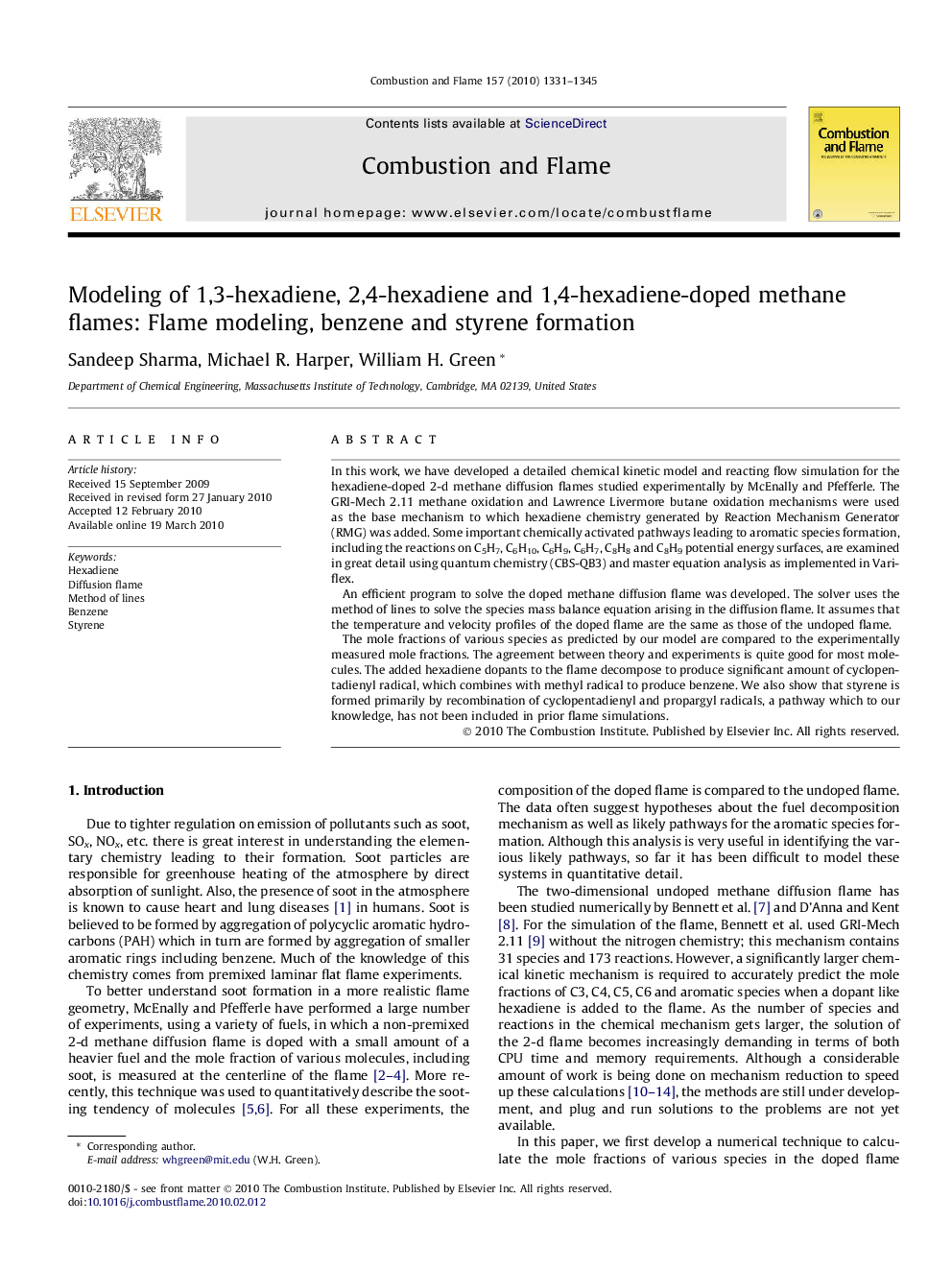| Article ID | Journal | Published Year | Pages | File Type |
|---|---|---|---|---|
| 169403 | Combustion and Flame | 2010 | 15 Pages |
In this work, we have developed a detailed chemical kinetic model and reacting flow simulation for the hexadiene-doped 2-d methane diffusion flames studied experimentally by McEnally and Pfefferle. The GRI-Mech 2.11 methane oxidation and Lawrence Livermore butane oxidation mechanisms were used as the base mechanism to which hexadiene chemistry generated by Reaction Mechanism Generator (RMG) was added. Some important chemically activated pathways leading to aromatic species formation, including the reactions on C5H7, C6H10, C6H9, C6H7, C8H8 and C8H9 potential energy surfaces, are examined in great detail using quantum chemistry (CBS-QB3) and master equation analysis as implemented in Variflex.An efficient program to solve the doped methane diffusion flame was developed. The solver uses the method of lines to solve the species mass balance equation arising in the diffusion flame. It assumes that the temperature and velocity profiles of the doped flame are the same as those of the undoped flame.The mole fractions of various species as predicted by our model are compared to the experimentally measured mole fractions. The agreement between theory and experiments is quite good for most molecules. The added hexadiene dopants to the flame decompose to produce significant amount of cyclopentadienyl radical, which combines with methyl radical to produce benzene. We also show that styrene is formed primarily by recombination of cyclopentadienyl and propargyl radicals, a pathway which to our knowledge, has not been included in prior flame simulations.
